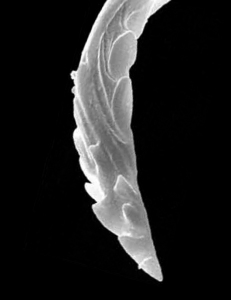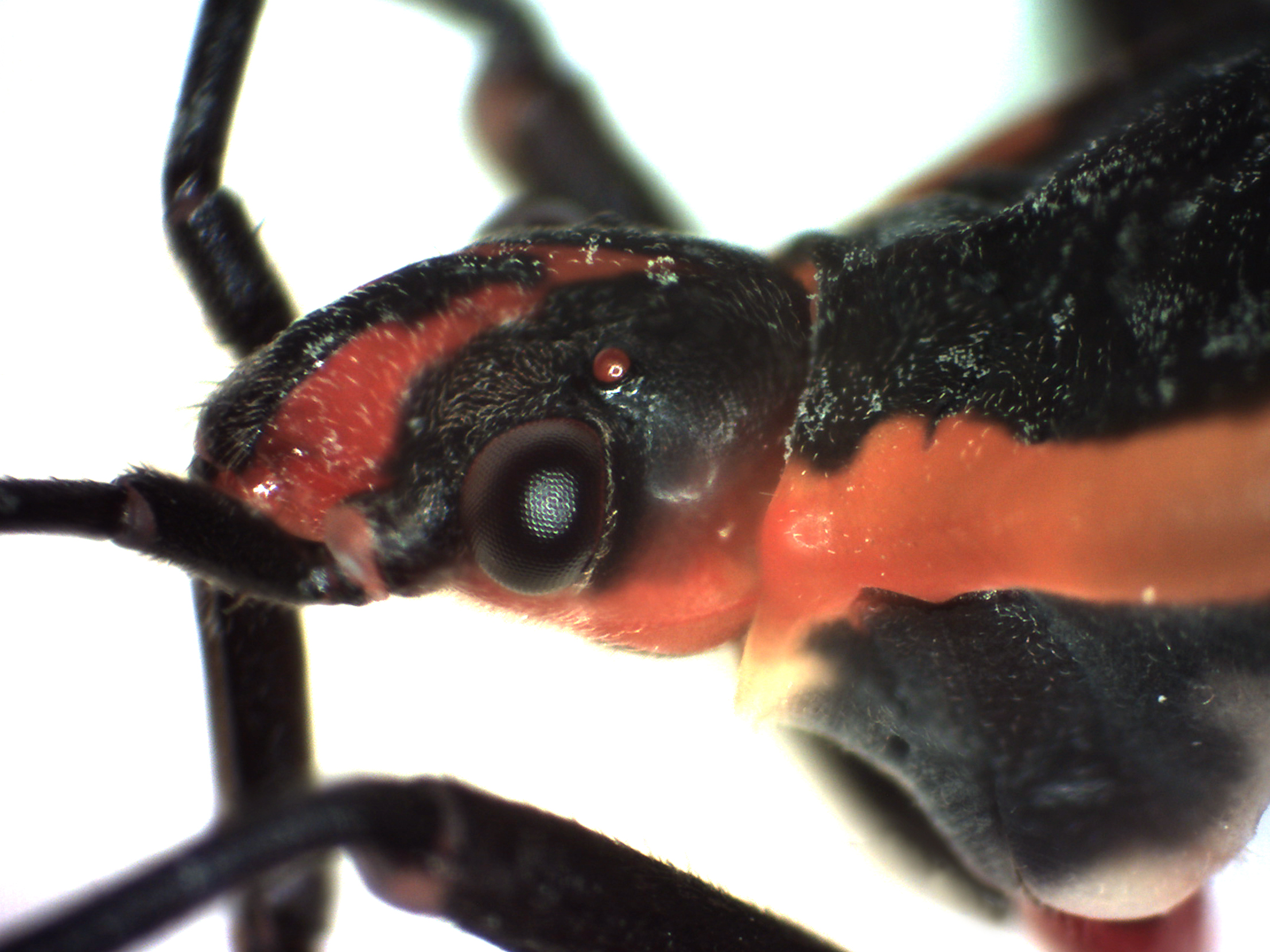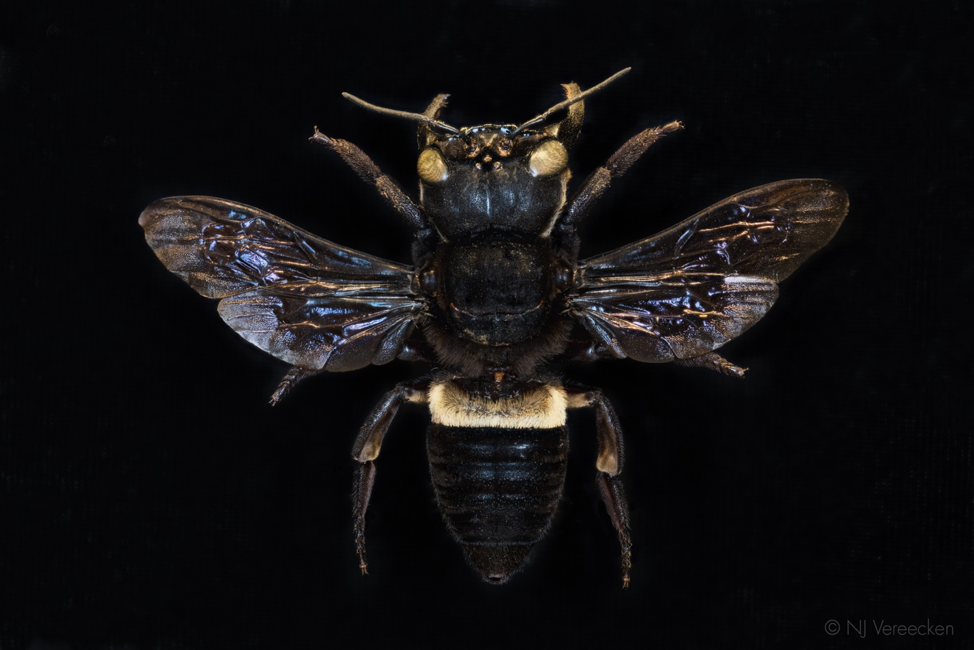What makes any bug a true bug? Insects in the order Hemiptera evolved from a common ancestor with a unique feature that all “true bugs” share today: a jointed beak. The hemipteran beak is a unique structure among insects and it enables bugs to feed in a very unique way.
The jointed part that you can see is called the labium. Bugs move this muscular appendage around to reach the food they want. If you get a good look at a bug under a microscope you can see that the labium has a groove down the middle. Nestled inside this groove is what looks like a thick bristle or hair. This bristle is actually four thin filaments called stylets. The stylets grow in a way that’s similar to appendages like the legs and antennae, but by the time they’re ready to be used all the cells in them have died. The stylets have no internal muscles, and the bugs can control them only by pushing and pulling from the base and because they are held by the labium. At the base of the beak is a short narrow flap called the labrum that helps hold the stylets in place.

All these parts work together. The labium positions the stylets, which have thin spaces between them that form two channels: one to secret saliva and a second to suck up the liquified food. The tips of the stylets look like tiny harpoons close up, because of course bugs need to puncture their food in order to eat.
For soapberry bugs, the food is seeds of flowers of a soapberry plant. However, some other bugs are predatory. The food these bugs want to puncture may be another insect, a bird, a mammal, or even a human! Assassin bugs can deliver a painful a “bite” although the wound is typically too small to see.
Amazingly, when a bug molts, it sheds the stylets along with its outer exoskeleton. So how does it eat? Before molting it has to grow new stylets underneath its exoskeleton. The new stylets must develop in a coil inside the head in order for them to reach the length of the beak, while still being contained inside the head.





